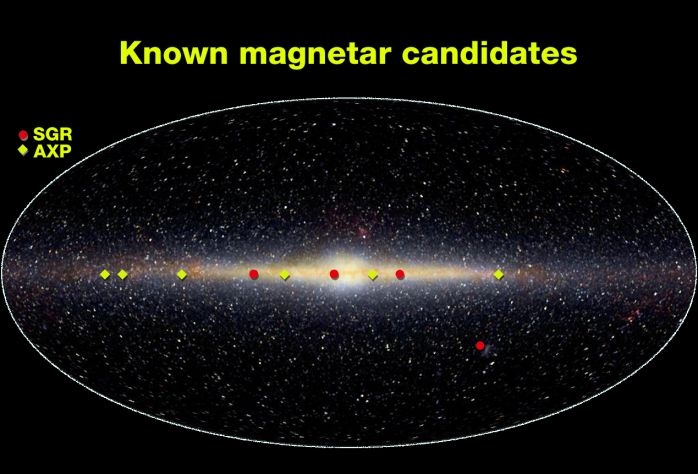ASKAP detects unexplainable radio signal near the Milky Way's centre
The Australian Square Kilometre Array Pathfinder (ASKAP) radio telescope has made yet another fascinating discovery: an unmatched radio signal near the centre of our galaxy.
ASKAP J173608.2−321635 is a radio source that appeared in ASKAP data 13 times between April 2019 and August 2020, for a few weeks each time. It doesn’t appear in previous radio survey of the centre of the Milky Way, although its high variability means that astronomers get lucky when they manage to catch it. Furthermore, the Chandra X-ray Observatory, the Neil Gehrels Swift Observatory, as well as the Visible and Infrared Survey Telescope for Astronomy in Chile have all been involved in subsequent observations, in order to spot the object that produces this unusual signal. Surprisingly, none of these could find … anything.
(cover image is a MeerKAT one in radio wavelengths)
Other radio telescopes that have contributed to the follow-up from this discovery in April and July of 2020 (Murriyang and Australia Telescope Compact Array, both in Australia and MeerKAT, South Africa) initially couldn’t detect it either, but in February 2021 MeerKAT caught ASKAP J173608.2−321635 and the ATCA caught a signal in April 2021. This confirms ASKAP’s observations, but also suggests that the source is one of the most elusive ones that we’ve ever detected, as most objects emit over a much broader range of frequencies and/or pulse periodically and predictably.
Various ideas have been put forward to explain the phenomenon. A first candidate that was quickly excluded is a low-mass star that would periodically flare up. That’s because such stellar sources’ flares should be accompanied by X-rays. What’s more, an overwhelming majority of stars can be detected thanks to infrared observations, which wasn’t the case here.

The next thing that comes to mind is a pulsar, or its magnetic counterpart the well-named magnetar. It is extremely unlikely for the later to not include an X-ray component in its outbursts due to the magnetic activity. Moreover, these objects both typically pulse with predictable periodicities of the order of hours rather than weeks.
The most similar “things” to this radio source that have been documented are three galactic centre radio transients (GCRTs). While nobody can find a reason for their existence, these other GCRTs recorded over the past twenty years or so all shine with a similar brightness to the object at hand, and likewise only shine in the radio regime. The issue though, is that they also appear and disappear much more quickly than their latest potential counterpart. This leaves us with a high uncertainty as to the nature of ASKAP J173608.2−321635.
Another recent mystery involving radio observations is that of Odd Radio Circles (ORCs), a new class of astronomical objects discovered in 2019 – much like ASKAP J173608.2−321635, ORCs don’t emit light at visible, infrared or X-ray wavelengths. However, the five ORCs we know off (although still unexplained) are highly circular blobs rather than transient sources.
Radio astronomy has wonderful days ahead of it with all these objects that our Universe has produced and which we don’t yet understand.
Cover Image: Radio view of galactic centre, MeerKAT/SARAO
Image Credits:
1 - Combined view of galactic centre, NASA/JPL
2 - Fig 1 from Discovery of ASKAP J173608.2−321635, Z. Wang et al., 2021
3 - Position of magnetars, E. L. Wright (UCLA), COBE Project, Courtesy MSFC, NASA
4 - ORC, Koribalski, based on ASKAP data/optical: Dark Energy Survey
